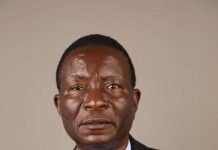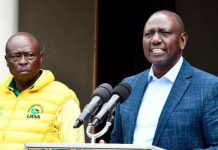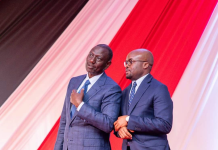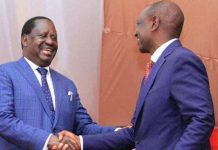Kenya’s political landscape has always been marked by a rich history of ethnic and regional representation. However, one community that has often felt marginalized in political appointments and national leadership is the Luo community. The historical political injustice faced by the Luos has been rooted in the country’s post-independence power structures, where representation from certain communities has been seen as secondary to others.
Recently, President William Ruto’s administration has sparked conversation with his appointments, notably involving individuals from the Luo community, a shift that is being viewed by many as a deliberate effort to address long-standing grievances and inequities in government representation.
The Historical Context: Political Marginalization of the Luo Community
The Luo community, which primarily resides in the western part of Kenya, has historically had limited political power despite being a significant ethnic group. The community has faced political exclusion and systemic marginalization since the post-independence era. During Kenya’s first two decades of independence, political power was largely dominated by the Kikuyu and Kalenjin communities. These communities held key positions of influence in the government, leaving the Luos and other minority communities at the fringes of power.
Notably, the late Jaramogi Oginga Odinga, a prominent Luo leader, was the first Vice President of Kenya but was sidelined in the political aftermath of the 1966 power struggles. Despite being a major figure in the country’s struggle for independence, Odinga’s political career was marred by years of political isolation, especially following his resignation from government and his subsequent opposition to the ruling regime. This event set the tone for decades of Luo underrepresentation.
Moreover, the absence of the Luos in critical government positions, including cabinet appointments and senior civil service roles, reinforced the perception of the community being politically sidelined. Many in the Luo community felt that their loyalty to the independence struggle was not being rewarded with adequate political representation or a fair share in the fruits of the nation’s leadership.
William Ruto’s Leadership: A Break from the Past?
Since taking office in 2022, President William Ruto has made strides to diversify his administration by incorporating members from different regions and communities, including the Luo community. This is seen by many as a conscious attempt to break away from the exclusionary politics of the past.
For years, Luos, who have been vital in shaping Kenya’s political discourse, especially through the leadership of the Odinga family, felt disconnected from the high echelons of political power. Under Ruto’s leadership, however, the appointments of Luos to prominent government positions have been seen as an effort to correct historical injustices.
Some key appointments include members of the Luo community to critical positions in government ministries and the public service. The rise of influential figures such as Dr. Raymond Omollo and members of the ODM party in Ruto’s administration has signaled a shift towards inclusivity. Many political analysts believe that these appointments are a deliberate move by Ruto to build bridges with communities that felt historically excluded from national decision-making processes.
Acknowledging the Past and Looking Forward
The appointments of Luos under Ruto’s government can be viewed as a symbolic recognition of the historical marginalization of the community. By bringing in qualified individuals from different ethnic backgrounds, including the Luos, Ruto appears to be taking a significant step in addressing the ethnic imbalances that have plagued previous administrations. This can be interpreted as not just a political gesture but also a genuine attempt to bring about national cohesion and inclusivity in government.
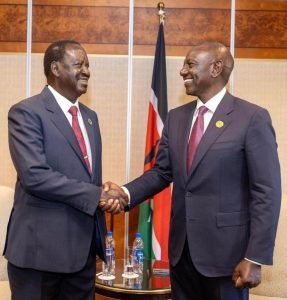
ALSO READ: HIGH COURT AFFIRMS SENATE’S DECISION TO IMPEACH MERU GOVERNOR KAWIRA MWANGAZA
The recognition of the Luos in leadership positions is also indicative of a broader shift in Kenyan politics, where the emphasis on ethnic politics may be giving way to more merit-based and inclusive governance. While there is still much work to be done in addressing the root causes of ethnic exclusion, such efforts by Ruto are seen as a step in the right direction.
Furthermore, Ruto’s outreach to the Luo community can be seen as part of a wider strategy to build national unity. The idea of “Hustler” politics, which Ruto has championed, advocates for a government that represents the people at the grassroots level. By appointing members of marginalized communities, Ruto is ensuring that no one feels left behind in the pursuit of Kenya’s development.
Criticisms and Challenges
Despite these efforts, there remain critics who argue that the appointments, while significant, do not fully address the complex political and social issues facing the Luo community. Some still feel that more needs to be done to integrate the community into the higher levels of decision-making and influence, as many top political offices continue to be dominated by other communities. Furthermore, some critics point out that while appointments are important, the true test of inclusivity will be in how the government addresses economic disparities and social injustices that persist in certain regions, including the Luo heartlands.
Moreover, the perception of political loyalty and patronage can sometimes undermine the progress made by genuine appointments. Some critics argue that political appointments should be based on merit and professional qualifications, rather than being used to appease communities for political gains. However, it remains to be seen how Ruto’s administration will balance this delicate issue in the long run.
Dr. Raymond Omollo: A Key Luo Figure in Ruto’s Government
Three years after being appointed Principal Secretary for Internal Security and National Administration, Dr. Raymond Omollo has emerged as one of the most influential and effective leaders in President William Ruto’s government.
Widely regarded as one of the top-performing Principal Secretaries, Dr. Omollo’s rapid rise is a reflection of his dedication, strategic leadership, and strong commitment to public service. His role has extended beyond his official capacity, making him a key figure in Ruto’s administration, particularly in the Nyanza region.
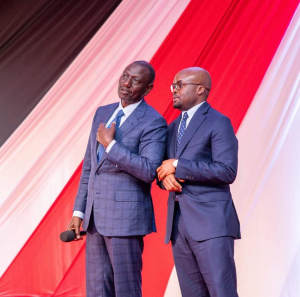
Dr. Omollo has become the President’s key liaison in the region, a position that has not only amplified his political influence but also cemented his status as a prominent player in the national political arena.
His tenure has been marked by several notable achievements, especially in strengthening national security, improving working conditions for National Government Administration Officers (NGAOs), and securing salary increases for police officers. Through these efforts, Omollo has demonstrated both his leadership capabilities and his dedication to advancing the welfare of Kenya’s public servants.
Conclusion: A New Dawn for the Luo Community?
The appointment of Luos in significant government positions under President William Ruto’s administration marks a turning point in Kenya’s political history. It is a clear acknowledgment of the past injustices and a step toward addressing the inequities that have long plagued the Luo community. By taking this action, Ruto is setting the stage for a more inclusive and cohesive government, where every community has an equal chance to contribute to the nation’s development.
However, as with any political effort, the true measure of success will depend on how these appointments translate into tangible benefits for the community and the country at large. If Ruto’s administration can continue to foster an environment of inclusivity and fairness, it could lay the foundation for a more united and prosperous Kenya for all its citizens, regardless of their ethnic background.



